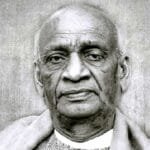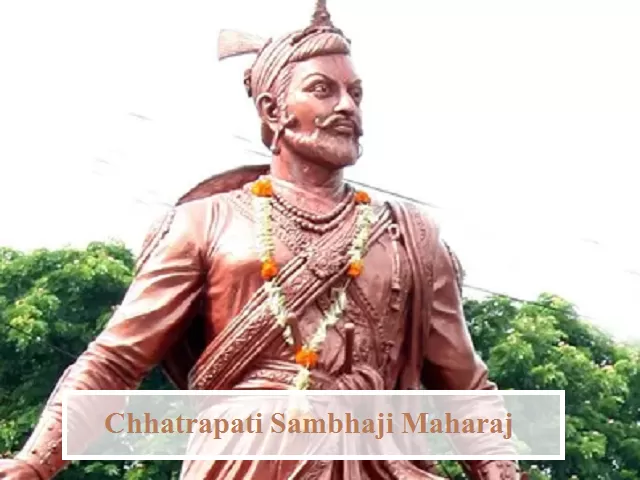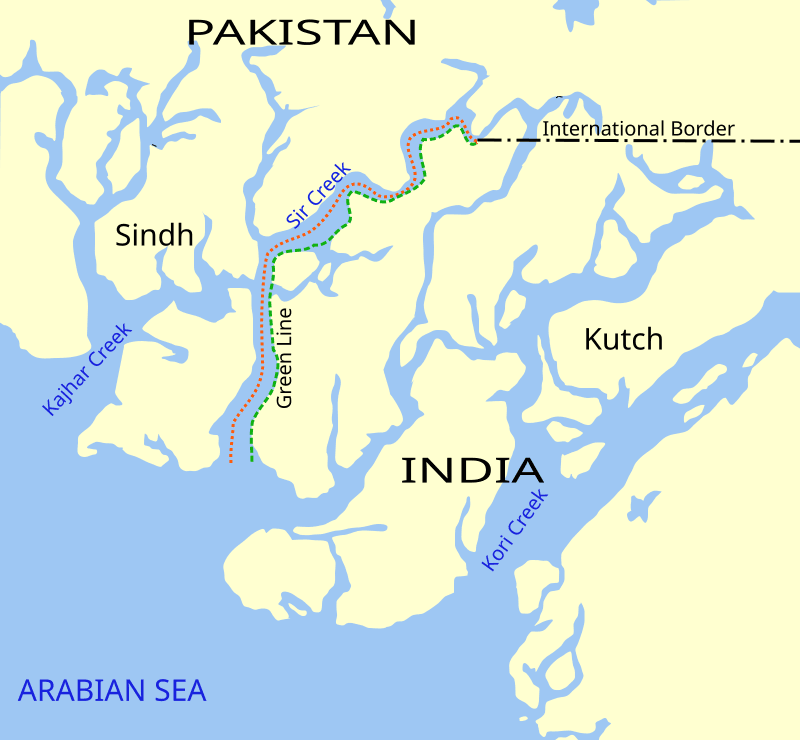Introduction
Sambhaji Maharaj, the eldest son of the legendary Chhatrapati Shivaji Maharaj, is a figure of immense historical significance in Indian history. His life, marked by valor, resilience, and an unyielding spirit, stands as a testament to the Maratha Empire’s struggle against the Mughal hegemony. Born into a period of intense political turmoil, Sambhaji’s reign was fraught with internal dissent and external threats. Despite the challenges, he emerged as a formidable leader who upheld the legacy of his father and laid the groundwork for the Maratha resistance that would eventually weaken the Mughal Empire. This article delves into the life, reign, and legacy of Sambhaji Maharaj, exploring his contributions, the challenges he faced, and his enduring impact on Indian history.
Early Life and Lineage
Sambhaji Maharaj was born on May 14, 1657, to Chhatrapati Shivaji Maharaj and his first wife, Saibai. His birth came at a time when Shivaji was consolidating his power and laying the foundations of the Maratha Empire. Tragically, Saibai passed away when Sambhaji was just two years old, leaving him to be raised in a complex household with multiple stepmothers and half-siblings. This early loss and the ensuing familial dynamics would later play a significant role in shaping Sambhaji’s character and his relationships within the royal family.
From a young age, Sambhaji was groomed to be a warrior and a leader. He received rigorous training in martial arts, administration, and languages, becoming proficient in Sanskrit and Marathi. His education was not limited to warfare; he was also well-versed in the arts and literature, which would later reflect in his literary contributions. Despite his training, Sambhaji’s relationship with his father was not without its strains. There were periods of estrangement, particularly when Sambhaji disagreed with Shivaji’s tactical decisions. However, these disagreements were eventually resolved, and Sambhaji proved his mettle in various military campaigns, including the siege of Panhala in 1673.
Succession Struggle
The death of Chhatrapati Shivaji Maharaj in 1680 marked the beginning of a tumultuous period for the Maratha Empire. Shivaji’s demise led to a bitter struggle for succession, with Sambhaji pitted against his half-brother Rajaram, who was supported by their stepmother Soyarabai. Soyarabai, Rajaram’s mother, orchestrated a coup and declared the ten-year-old Rajaram as the king, sidelining Sambhaji. This move was driven by political maneuvering and the desire to control the empire through a pliable minor.
Sambhaji, however, was not one to be easily subdued. With the support of loyalists like Kavi Kalash, he managed to escape imprisonment and assert his claim to the throne. In 1681, Sambhaji was crowned as the Chhatrapati, but his ascension was not without bloodshed. He executed several of Soyarabai’s allies to consolidate his power, a move that underscored the ruthless political landscape of the time.
Reign and Challenges
Sambhaji’s reign was marked by a series of formidable challenges, both internal and external. Internally, he had to contend with dissent from factions that favored Rajaram and regional chiefs who were wary of his authority. One of the most significant internal threats came from Annaji Datto, a senior administrator who plotted against Sambhaji. The king’s ability to quell these rebellions and maintain control over his kingdom was a testament to his political acumen and military prowess.
Externally, the Maratha Empire faced relentless pressure from the Mughal Empire under Aurangzeb. Aurangzeb, determined to crush the Marathas, launched the Deccan campaigns, which posed a significant threat to Sambhaji’s rule. Despite being outnumbered and outgunned, Sambhaji employed guerrilla tactics, a strategy that had been effectively used by his father. He defended key forts like Raigad and Panhala, showcasing his strategic brilliance and resilience.
In addition to the Mughals, Sambhaji also had to deal with the Portuguese in Goa and the Siddis of Janjira. The Portuguese, who controlled significant coastal regions, were a constant thorn in the side of the Marathas. Sambhaji’s campaigns against the Portuguese in 1683 were aimed at securing Maratha dominance over these crucial areas. Similarly, his conflicts with the Siddis, who were allied with the Mughals, were part of his broader strategy to weaken Mughal influence in the Deccan.
Literary Contributions
While Sambhaji Maharaj is often remembered for his military exploits, his contributions to literature and culture are equally noteworthy. He was a scholar in his own right, fluent in Sanskrit and Marathi, and authored several works that reflected his intellectual depth. Among his notable literary contributions are Budhbhushanam, a treatise on statecraft, and various Marathi poems that showcased his poetic talent.
Sambhaji’s literary works provide a glimpse into his philosophical outlook and his understanding of governance. Budhbhushanam, in particular, is a valuable text that offers insights into the principles of administration and the duties of a ruler. These contributions underscore the fact that Sambhaji was not just a warrior-king but also a thinker who valued the arts and education.
Capture and Martyrdom
The year 1689 marked a turning point in Sambhaji’s life and reign. In February of that year, he was captured by Mughal forces near Sangameshwar. The circumstances of his capture are shrouded in controversy, with some accounts suggesting that he was betrayed by his own minister, Ganoji Shirke. Regardless of the specifics, Sambhaji’s capture was a significant blow to the Maratha Empire.
Aurangzeb, the Mughal emperor, saw Sambhaji’s capture as an opportunity to break the Maratha resistance. He offered Sambhaji clemency on the condition that he convert to Islam. Sambhaji, however, refused to renounce his faith and remained steadfast in his defiance. His refusal led to brutal torture, including blinding and the removal of his tongue, before he was finally executed on March 11, 1689. His body was dismembered and thrown into the river, a act intended to demoralize the Marathas but which instead galvanized them.
Legacy
Sambhaji Maharaj’s martyrdom had a profound impact on the Maratha Empire and its people. His unwavering stance against Aurangzeb and his refusal to convert under duress made him a symbol of resistance and resilience. His death served as a rallying cry for the Marathas, who continued to fight under the leadership of Rajaram and later Tarabai. The prolonged resistance against the Mughals, which eventually led to the decline of their empire, can be traced back to the spirit of defiance embodied by Sambhaji.
In Maharashtra, Sambhaji is remembered as a national hero. His life and sacrifices are celebrated in Marathi folklore, literature, and historiography. Monuments and memorials dedicated to him stand as a testament to his enduring legacy. His contributions to the Maratha Empire, both as a warrior and a scholar, have cemented his place in Indian history as a figure of immense importance.
Historical Context and Debates
While Sambhaji Maharaj is widely revered, his reign is not without its critics. Some historians argue that his diplomatic choices, such as allying with the rebel Mughal prince Akbar, strained the Maratha resources and diverted attention from more pressing threats. Others point to the internal dissent and the harsh measures he took to consolidate power as blemishes on his legacy.
However, these criticisms are often weighed against the broader context of his reign. The Maratha Empire was in a precarious position, surrounded by powerful adversaries and rife with internal discord. Sambhaji’s actions, though sometimes controversial, were driven by the need to protect his kingdom and uphold the legacy of his father.
Conclusion
Sambhaji Maharaj’s life and reign were marked by extraordinary challenges and remarkable resilience. As the eldest son of Chhatrapati Shivaji Maharaj, he inherited a kingdom under siege and a legacy of resistance against Mughal domination. His ability to navigate the complex political landscape, defend his kingdom against formidable foes, and uphold the values of his father is a testament to his leadership and valor.
Sambhaji’s martyrdom at the hands of Aurangzeb is a poignant chapter in Indian history, symbolizing the unyielding spirit of the Marathas. His legacy continues to inspire and resonate, particularly in Maharashtra, where he is celebrated as a hero who stood firm in the face of adversity. Sambhaji Maharaj’s contributions to the Maratha Empire and his enduring impact on Indian history underscore his significance as a pivotal figure in the struggle for sovereignty and resistance against oppression.












